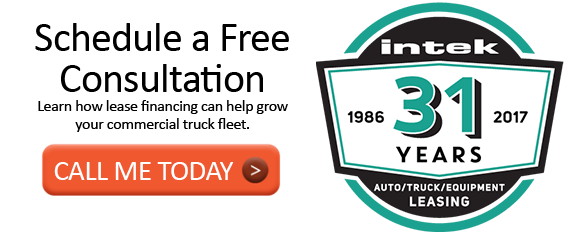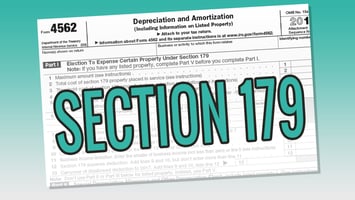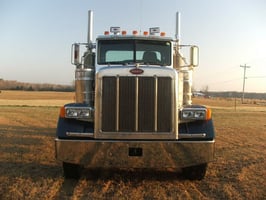Want to expand your fleet heading into 2018? Leveraging the Section 179 deduction for your...
Section 179 Deduction Vehicle Criteria, Limits for Tax Year 2017
 Interested in taking advantage of the Section 179 tax code, but not sure where to start? Don’t be intimidated -- you can easily take advantage of it and put money back into your commercial vehicle fleet. Keep reading for Section 179 deduction vehicle qualifications and spending limitations.
Interested in taking advantage of the Section 179 tax code, but not sure where to start? Don’t be intimidated -- you can easily take advantage of it and put money back into your commercial vehicle fleet. Keep reading for Section 179 deduction vehicle qualifications and spending limitations.
The tax year ends Dec. 31, so get prepared before it’s too late!
What Is Section 179?
Section 179 is a piece of IRS tax code. It allows businesses to deduct part or all of the purchase price of qualifying equipment purchased or financed. The greatness of Section 179 lies in getting to deduct the cost immediately instead of gradually throughout the equipment’s useful life.
This tax strategy works on both new and used equipment (as well as off-the-shelf software like telematics technology). To score a deduction for tax year 2017, the equipment must be financed or purchased -- and put into service between -- Jan. 1 and Dec. 31 this year.
While Section 179 is a great benefit, each company’s tax situation is unique. Check with a tax professional to see how it’ll affect you.
So, how much you can expect to save if you complete this simple filing process?
Section 179 Deduction Vehicle Spending Limits
Section 179 is meant for small- and medium-sized businesses, so it has its limits.
Each year, a list of the qualifying vehicles is released. If you lease or buy a piece of qualifying equipment, you can deduct 100% of the purchase price from your gross income.
Here are the parameters for large equipment.
(Afterward, want an easy way to calculate your lowered cost of equipment? Use this calculator.)
1. Deduction Limit: $500,000
You can deduct up to $500,000 using the Section 179 deduction in tax year 2017. As long as you stay under the spending cap, you can use the full $500,000.
Example Time: Say your fleet company spends $1.4 million on equipment in 2017. You’re eligible to reduce your costs to $900,000 with Section 179!
2. Spending Cap on Equipment: $2 million
Did you spend more than $2 million on business capital purchases this year? You'll lose $1 in deductions for every dollar above $2 million you spend.
Example Time: If you spend $2.2 million on used equipment, then you can only deduct $300,000 using Section 179 (instead of the usual $500,000 max) because you were $200,000 over the limit.
3. Bonus Depreciation: 50%
After you reach the annual Section 179 spending limit, you can take a bonus depreciation of 50% on the remaining value of the equipment you put into service. The equipment must be used for business purposes more than 50% of the time to be eligible for the deduction.
A note on smaller equipment: For sport utility vehicles and other similarly sized vehicles, the limit for both the Section 179 deduction and bonus depreciation is $25,000.
Example Time: Your livery company spent $100,000 on an SUV this year. So you subtract the $25,000 maximum deduction and up with $75,000 in cost. From there, you can depreciate half -- $37,500. That leaves you with $37,500 to pay.
Another limit: Bonus depreciation is available for new equipment only. This doesn’t mean you can’t take advantage of buying new equipment. You just can’t take advantage of the accelerated depreciation that Section 179 offers.
Does Your Vehicle Qualify?
1. Small Commercial Vehicles
For SUVs and similarly sized vehicles to qualify, gross vehicle weight (GVW) must be greater than 6,000 pounds without any passengers or cargo.
Vehicles with a loaded gross vehicle weight rating of more than 6,000 pounds are eligible if their manufacturer classifies them as a truck or van.
2. Large Commercial Vehicles
Large commercial vehicles easily exceed the weight minimum, so no need to worry whether your heavy-duty wrecker, dump truck, or tractor-trailer qualifies!
Now Get Going!
Don’t forget to act quickly on this cost-cutting measure. It’s a great way to use lease financing to your benefit. So many others are taking advantage of these pro-business rules -- why shouldn’t your fleet?




